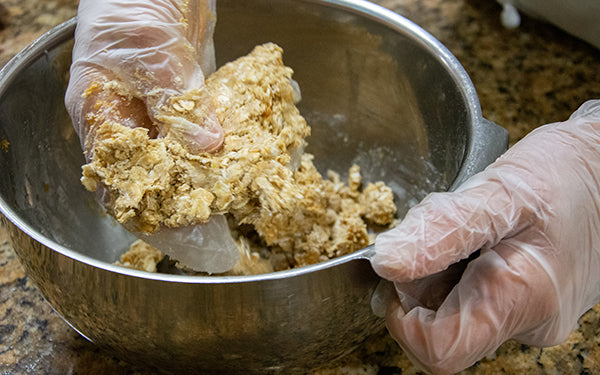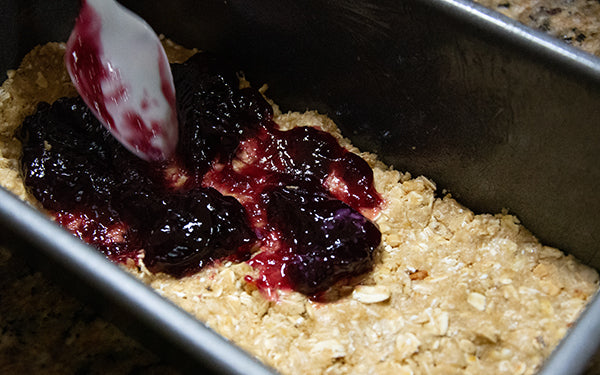“KEEN-wah” – The Quick-Cooking Whole Grain
By Cheryl Forberg, RD
Quinoa, in general, is one of the most diverse sources of nutrients you are likely to find in the plant world. As a grass that’s a cousin to beets and spinach, it boasts a much larger portfolio of nutrients than “real” whole grains (quinoa is a pseudo-cereal and not a grain at all). In addition to the commonly known facts that quinoa is gluten-free and protein-rich, other, less well-known benefits include the fact that quinoa is full of many vitamins and minerals and has an abundance of cancer-fighting, anti-inflammatory antioxidants.
In short, you’d be hard pressed to find a more complete source of nutrition that can be consumed with extremely minimal processing. And if you know only one thing about quinoa, it might be this fact: Quinoa is a gluten-free super food, without the unhealthy additives that many gluten-free products contain. It can fill in for grains and flours ably. And even if you don’t have a gluten allergy or sensitivity, cutting back on processed gluten-containing foods is a very good idea for overall heath.
Not only is quinoa a good source of protein, it’s a complete protein, meaning that it contains all nine essential amino acids, the building blocks of protein. This complete nutrition profile distinguishes quinoa (and soy!) from other plant-based proteins, which is one reason why it is so popular with vegetarians.
Quinoa is a very good source of fiber, and it contains both soluble and insoluble fiber, both of which are vital components to a balanced diet. Soluble fiber, as the name suggests, combines with water and creates a gel-like substance that slows digestion and can contribute to a feeling of fullness (or satiety) so that you may eat less. Insoluble fiber is the kind you are probably more familiar with — the one that keeps you regular.
When turned into flakes, some “whole” grains lose their wholeness, but not so with quinoa. Unlike other grain cereals, quinoa flakes remain “whole grain” after processing. The hull, endosperm, and bran are all intact after quinoa is steam-rolled (rather than broken into pieces, as is the case with the others) into a flake that cooks in minutes. Sprouting quinoa boosts its nutritional value even higher. The germination process activates enzymes that increase quinoa’s already admirable vitamin richness.
Quinoa is rich in B vitamins (there are a total of eight), many of which are good for your skin and hair (B-6 and B-9) and for nervous system functions (B-6). Bottom line: The B vitamins in quinoa constantly help you convert all the other good stuff in quinoa into forms your body can use. Although many grains are not a sufficient source of fat — and yes you do need fat in your diet (the “good” kinds, known as mono- and polyunsaturated) — quinoa is an excellent source of beneficial fats. About 25 percent of quinoa’s fatty acids come in the form of oleic acid, a heart-healthy monounsaturated fat, and about 8 percent come in the form of alpha-linolenic acid (ALA) — the omega-3 fatty acid most commonly found in plants and associated with decreased risk of inflammation-related disease. Quinoa also has omega-6 fatty acids in sufficient amounts to support a healthy skeletal system and metabolism.
You know you can turn to milk for calcium, but vegans or people who have dairy allergies or want to avoid milk for some other reason need an alternative. Although quinoa doesn’t provide all the calcium you need, it is an excellent alternative source of calcium. A cup of milk has 300 mgs of calcium, and a cup of quinoa has about 150 mgs, more than twice the amount of calcium found in whole wheat. This wonderful little seed is a good source of antioxidants — in particular, the flavonoids quercetin and kaempferol. Studies have shown these flavonoids to be anti-inflammatory, and they may help to reduce the risk of cancer and cardiovascular diseases.
And if all of those nutritional attributes aren’t enough, this quick-cooking whole grain is also delicious. This is a popular quinoa snack at our house. All-fruit jams and fruit spreads substitute well for grape jam or jelly.
PBJ Granola Bars
This is a kid-friendly snack the whole family will love. Great for breakfast, they’re also perfect for snacks or dessert.
Yield: 32 bars

Ingredients:
Cooking oil spray
4 1⁄2 cups gluten-free, old-fashioned rolled oats
1⁄2 cup quinoa flour
1⁄2 cup gluten-free oat flour
1 teaspoon baking soda
2⁄3 cup chunky natural peanut (or almond) butter
1⁄2 cup agave nectar
1⁄2 cup milk (or almond or rice milk)
2 tablespoons grapeseed oil
1 tablespoon pure vanilla extract
1 1⁄2 cups no sugar added Concord grape jam or jelly
Instructions:
Preheat the oven to 325 degrees.
Lightly coat a 13 x 9-inch-baking pan with olive oil spray.

Combine the first nine ingredients in a large mixing bowl; mix well.
Lightly press half of the oat mixture into the prepared pan.

Spread the jam evenly over the oat mixture.

Crumble the remaining oat mixture evenly over the jam layer. Press down with the palm of your hand to flatten slightly.
Bake for about 25 minutes, or until golden brown. Remove from the oven and let the pan cool for 10 minutes; then cut the granola into bars while still in the pan. Let the bars cool completely in the pan before removing or serving.
Per serving: Calories 145 (From Fat 41); Fat 5g (Saturated 1g); Cholesterol 1mg; Sodium 35mg; Carbohydrate 23g (Dietary Fiber 2g); Protein 4g.
Tip: Store these bars in an airtight container in your pantry or cupboard and keep them on hand for a healthy, after-school snack.
Quinoa, in general, is one of the most diverse sources of nutrients you are likely to find in the plant world. As a grass that’s a cousin to beets and spinach, it boasts a much larger portfolio of nutrients than “real” whole grains (quinoa is a pseudo-cereal and not a grain at all). In addition to the commonly known facts that quinoa is gluten-free and protein-rich, other, less well-known benefits include the fact that quinoa is full of many vitamins and minerals and has an abundance of cancer-fighting, anti-inflammatory antioxidants.
In short, you’d be hard pressed to find a more complete source of nutrition that can be consumed with extremely minimal processing. And if you know only one thing about quinoa, it might be this fact: Quinoa is a gluten-free super food, without the unhealthy additives that many gluten-free products contain. It can fill in for grains and flours ably. And even if you don’t have a gluten allergy or sensitivity, cutting back on processed gluten-containing foods is a very good idea for overall heath.
Not only is quinoa a good source of protein, it’s a complete protein, meaning that it contains all nine essential amino acids, the building blocks of protein. This complete nutrition profile distinguishes quinoa (and soy!) from other plant-based proteins, which is one reason why it is so popular with vegetarians.
Quinoa is a very good source of fiber, and it contains both soluble and insoluble fiber, both of which are vital components to a balanced diet. Soluble fiber, as the name suggests, combines with water and creates a gel-like substance that slows digestion and can contribute to a feeling of fullness (or satiety) so that you may eat less. Insoluble fiber is the kind you are probably more familiar with — the one that keeps you regular.
When turned into flakes, some “whole” grains lose their wholeness, but not so with quinoa. Unlike other grain cereals, quinoa flakes remain “whole grain” after processing. The hull, endosperm, and bran are all intact after quinoa is steam-rolled (rather than broken into pieces, as is the case with the others) into a flake that cooks in minutes. Sprouting quinoa boosts its nutritional value even higher. The germination process activates enzymes that increase quinoa’s already admirable vitamin richness.
Quinoa is rich in B vitamins (there are a total of eight), many of which are good for your skin and hair (B-6 and B-9) and for nervous system functions (B-6). Bottom line: The B vitamins in quinoa constantly help you convert all the other good stuff in quinoa into forms your body can use. Although many grains are not a sufficient source of fat — and yes you do need fat in your diet (the “good” kinds, known as mono- and polyunsaturated) — quinoa is an excellent source of beneficial fats. About 25 percent of quinoa’s fatty acids come in the form of oleic acid, a heart-healthy monounsaturated fat, and about 8 percent come in the form of alpha-linolenic acid (ALA) — the omega-3 fatty acid most commonly found in plants and associated with decreased risk of inflammation-related disease. Quinoa also has omega-6 fatty acids in sufficient amounts to support a healthy skeletal system and metabolism.
You know you can turn to milk for calcium, but vegans or people who have dairy allergies or want to avoid milk for some other reason need an alternative. Although quinoa doesn’t provide all the calcium you need, it is an excellent alternative source of calcium. A cup of milk has 300 mgs of calcium, and a cup of quinoa has about 150 mgs, more than twice the amount of calcium found in whole wheat. This wonderful little seed is a good source of antioxidants — in particular, the flavonoids quercetin and kaempferol. Studies have shown these flavonoids to be anti-inflammatory, and they may help to reduce the risk of cancer and cardiovascular diseases.
And if all of those nutritional attributes aren’t enough, this quick-cooking whole grain is also delicious. This is a popular quinoa snack at our house. All-fruit jams and fruit spreads substitute well for grape jam or jelly.
PBJ Granola Bars
This is a kid-friendly snack the whole family will love. Great for breakfast, they’re also perfect for snacks or dessert.
Yield: 32 bars

Ingredients:
Cooking oil spray
4 1⁄2 cups gluten-free, old-fashioned rolled oats
1⁄2 cup quinoa flour
1⁄2 cup gluten-free oat flour
1 teaspoon baking soda
2⁄3 cup chunky natural peanut (or almond) butter
1⁄2 cup agave nectar
1⁄2 cup milk (or almond or rice milk)
2 tablespoons grapeseed oil
1 tablespoon pure vanilla extract
1 1⁄2 cups no sugar added Concord grape jam or jelly
Instructions:
Preheat the oven to 325 degrees.
Lightly coat a 13 x 9-inch-baking pan with olive oil spray.

Combine the first nine ingredients in a large mixing bowl; mix well.
Lightly press half of the oat mixture into the prepared pan.

Spread the jam evenly over the oat mixture.

Crumble the remaining oat mixture evenly over the jam layer. Press down with the palm of your hand to flatten slightly.
Bake for about 25 minutes, or until golden brown. Remove from the oven and let the pan cool for 10 minutes; then cut the granola into bars while still in the pan. Let the bars cool completely in the pan before removing or serving.
Per serving: Calories 145 (From Fat 41); Fat 5g (Saturated 1g); Cholesterol 1mg; Sodium 35mg; Carbohydrate 23g (Dietary Fiber 2g); Protein 4g.
Tip: Store these bars in an airtight container in your pantry or cupboard and keep them on hand for a healthy, after-school snack.

